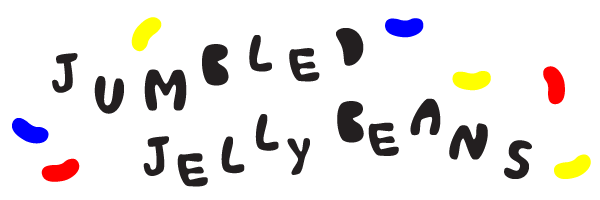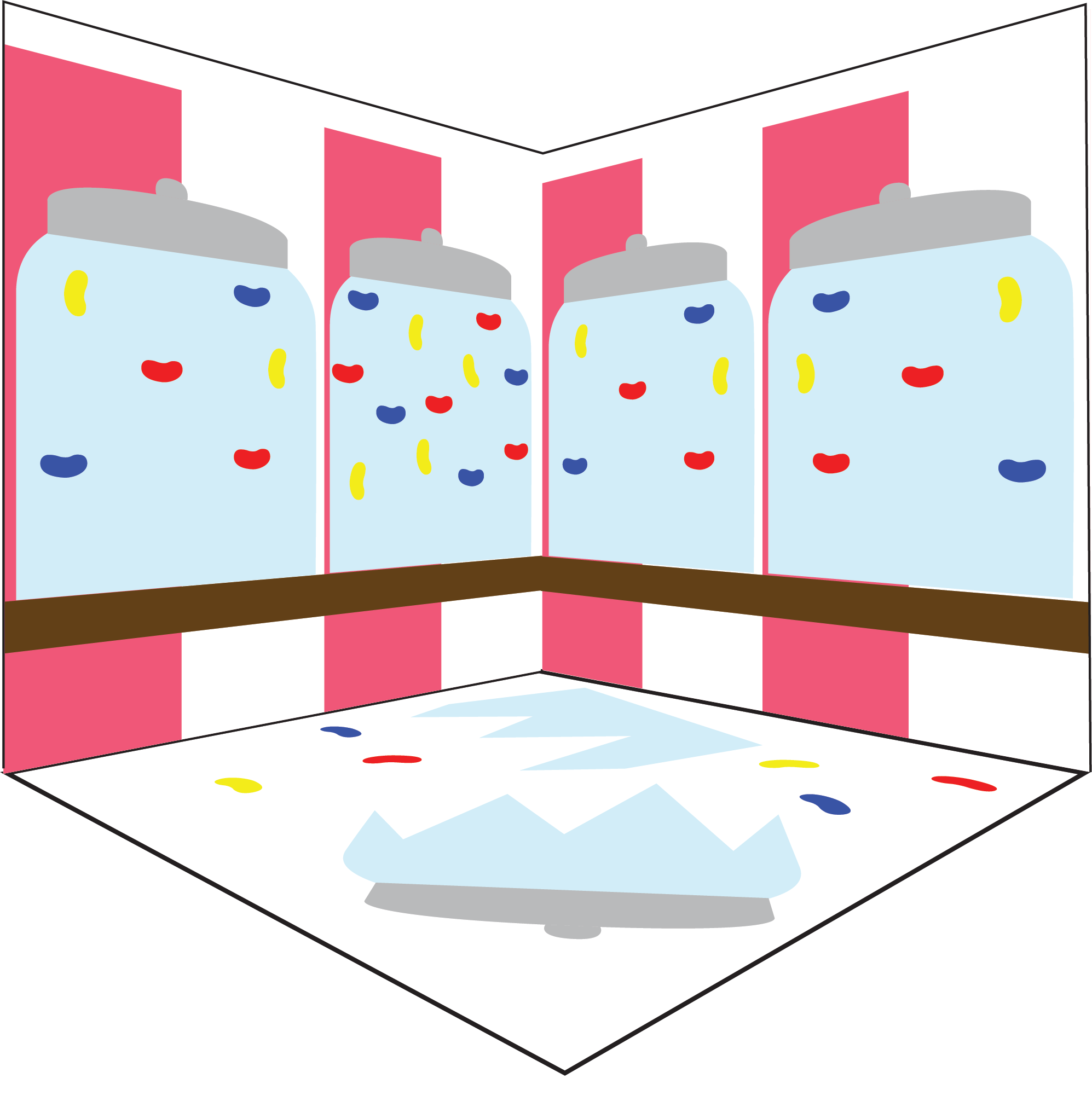
STORY | ASSEMBLY | HOLDS | ELECTRONICS | USER EXPERIENCE | BOM | NEXT STEPS
JANA SAADI AND CLAIRE ROBINSON | TEAM ARK | THEME: SUGARLAND | HOME
When players enter the room, they can imagine that they are walking into a giant display of jelly bean jars. Around them, four giant jars of jelly beans span two walls, two per wall. Inside the jars of jelly beans are jelly bean rock holds of the three primary colors: red, yellow, and blue. The jars are resting on a shelf, which functions as a mini-ledge that players can climb on. On the ground an illustration of a shattered glass jar with jelly beans spilling out, hinting to the players that the 'floor is lava' and must be avoided, lest they injure themselves on the glass shards! (Note: this will just be an giant illustration on the floor, such as a sticker or a painting, and not on actual broken-glass prop, which would complicate the room and add a safety concern when players are scrambling through the room.)
The room is 12 feet x 12 feet, with the ledges set at 1.5 feet and the jelly bean rock holds spanning up until 7.5 feet high. This will encourage players to climb and scramble across instead of up, minimizing safety concerns. Currently, there are 10 holds of each color, totalling in 30 holds, spread across the room. This accounts for a maximum of 5 players, with both their hands on a single color at a time. We placed the holds high enough above the ledge to make it more difficult for guests to place their feet on the holds discouraging them from climbing up. The room is designed such that the wall on the left can take up to three people, and the wall on the right fits two people for a total of five possible players in the room.

Since the walls for the room came to us pre-made, we could not reach the panel in the double panel wall in order to secure the ledge. Therefore, in order to attach the ledge we used 3" brackets screwed into the supports, and longer 1.5" thick and 1.5' wide l-bracket in between. However, we found that the ledge was still not fully secure to the wall, and could not hold the weight of two people. Ideally the ledge would be attached to the front panel of the wall with screws first, and then the back panel of the wall would be secured in.
We placed the two strips of LEDs on the header panels, arranging the strips across from each other which allowed the optimal amount of light while reducing hotspots. We then layered two strips of translucent material to help diffuse the LEDs, with a gap between the layers to allow for better diffusion. Since the header panels need to come apart, we cut the LED strips into pieces, and male and female ends to the strips so they can be assembled back together. We found that the lengths of each strip and the location of the pins must be very precise in order to easily connect them together. The strips that we used can be cut with every three LEDS, but we recommend that a strips with more frequent cutting lines be used for more precision.
The walls are striped pink and white to mimic the aesthetic and feel of a candy store. There is a white strip at the very top of the wall that is approximately 4 inches wide, to allow guests to easily identify the color of the LEDs.